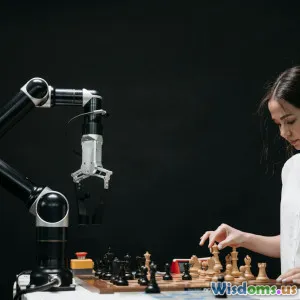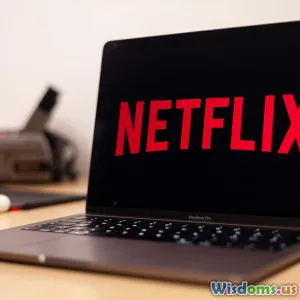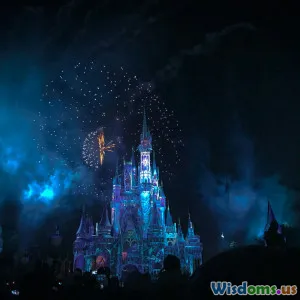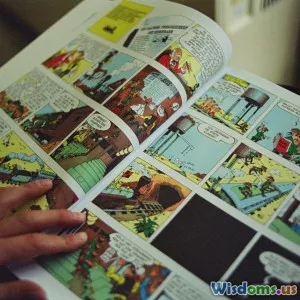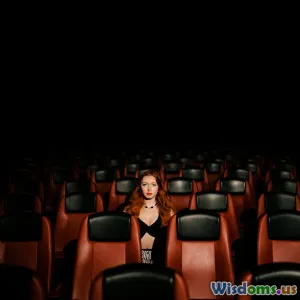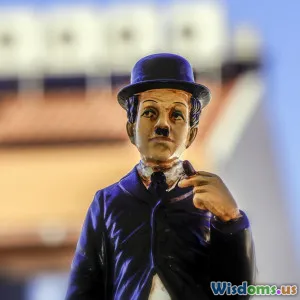
How Classic Films Shape the Stories of Modern Cinema
14 min read Explore how classic films shape modern cinema, influencing narratives, styles, and storytelling techniques in today’s movies. (0 Reviews)
How Classic Films Shape the Stories of Modern Cinema
Lights, camera, legacy: If you’ve ever wondered why certain themes and images keep reappearing in contemporary movies, the answer is simple—modern cinema owes a profound debt to the classics. From the sweeping dramas of Hollywood's Golden Age to niche European auteurs, films that transformed screens decades ago continue to echo through today's stories, characters, and cinematic techniques. New movies don’t just imitate the past—they reinterpret, subvert, and expand upon it. Let’s explore exactly how classic filmmaking is hardwired into today’s cinematic DNA, with concrete examples revealing the living, breathing history of film on the silver screen.
Foundations of Storytelling: Archetypes and Structure

Despite evolving technology and audience tastes, core storytelling structures established by classic films remain essential in modern cinema. The three-act structure—a paradigm shaped by Greek tragedy but championed in film by classics like "Gone with the Wind" (1939)—forms the backbone of countless blockbusters today.
Contemporary films continue to employ familiar archetypes: the reluctant hero, the wise mentor, and the formidable antagonist. Picture Luke Skywalker in "Star Wars" (1977) echoing Dorothy from "The Wizard of Oz" (1939); both heroes start naive, face trials, and emerge changed. George Lucas openly cites the influence of Akira Kurosawa’s "The Hidden Fortress" (1958) on his own work, especially in how he introduces the story through low-ranking characters analogous to R2-D2 and C-3PO.
Modern screenwriters study classic works not merely for nostalgia, but because those films hardwired successful formulas into public consciousness. Pixar’s "Up" (2009) follows a "quest" pattern reminiscent of "The Searchers" (1956)—showing that even in animation, classic structure remains vital.
Cinematic Technique: Homage and Innovation

Today’s directors speak visually with a language first forged by pioneers. Alfred Hitchcock’s meticulous manipulation of suspense in "Psycho" (1960) and "Vertigo" (1958) introduced storyboarding and camera movement techniques now commonplace—from the sweeping tracking shots in "1917" (2019), to the subjective, voyeuristic lens of "Joker" (2019).
Steven Spielberg’s "Jaws" (1975) reframed horror aesthetics, using pacing, point-of-view, and music in the tradition of "Psycho." Christopher Nolan cites classics like "Lawrence of Arabia" (1962) and "2001: A Space Odyssey" (1968) for his use of wide vistas, slow builds, and practical effects, as seen in "Interstellar" (2014) and "Dunkirk" (2017).
The innovations aren’t always literal. The Coen brothers routinely pay homage through visual pastiche. Their film "The Man Who Wasn’t There" (2001) consciously adopts the black-and-white aesthetic, lighting, and hard-boiled narrative of noir classics like "Double Indemnity" (1944). Yet, it’s more than replication—they imbue new context with familiar visuals, updating dated motifs for postmodern audiences.
Genre Evolution: Remakes, Parodies, and Reimaginings

Genres are a dialogue with the past. Modern blockbusters thrive on the bones of earlier works—sometimes revitalizing, sometimes lampooning.
Consider horror. "Get Out" (2017), lauded for its social subtext, draws on the creepy atmosphere and suburban paranoia explored in "Rosemary’s Baby" (1968) and "The Stepford Wives" (1975). Similarly, Quentin Tarantino’s "Kill Bill" series splices together samurai traditions from "Lady Snowblood" (1973), martial arts choreography inspired by Bruce Lee’s classics, and blaxploitation riffs from "Foxy Brown" (1974).
In remakes, the layers deepen. "A Star is Born" (2018) is a fourth iteration, tracing its roots to the 1937 original, each version reflecting the music trends and gender politics of its era. Even tongue-in-cheek parodies like "Shaun of the Dead" (2004) gain richness by referencing and subverting tropes from "Night of the Living Dead" (1968) and Hammer horror films. The enduring appeal of reimagining isn’t accidental; it’s a conversation across time, allowing creators to address new cultural anxieties through familiar frameworks.
Themes and Social Commentary: Updating the Conversation

Classic films forced audiences to confront issues that resonate decades later. Modern filmmakers both honor and evolve these traditions to engage new social realities.
"Guess Who’s Coming to Dinner" (1967) tackled interracial marriage during the civil rights movement, its blunt discussions recontextualized in "Loving" (2016), which delves deeper into legal struggles and emotional nuance. Billie Holiday’s struggles with racism and government persecution portrayed in "Lady Sings the Blues" (1972) inspired the narrative foundation of "The United States vs. Billie Holiday" (2021), foregrounding contemporary themes of surveillance and activism.
Science fiction’s classic cautionary tales, like "Metropolis" (1927) and "The Day the Earth Stood Still" (1951), were reinterpreted by "Ex Machina" (2015) and "Arrival" (2016) to probe questions of artificial intelligence, communication, and identity. By revisiting core anxieties through modern lenses, new films expand rather than simply repeat cultural conversations.
Iconic Characters and Recurrent Motifs
Some cinematic elements burn so memorably into collective memory that they become shorthand for all of film storytelling. The femme fatale—perfected in "Gilda" (1946) and "Sunset Boulevard" (1950)—is echoed and subverted by characters like Lisbeth Salander of "The Girl with the Dragon Tattoo" (2011). Antiheroes in classics such as "The Godfather" (1972) pave the way for morally ambiguous characters like Walter White from "Breaking Bad" or Tony Soprano, indicating how TV also benefits from cinematic templates.
Costume and signature images cycle through eras. The little black dress popularized by Audrey Hepburn in "Breakfast at Tiffany’s" (1961) still inspires wardrobe choices for iconic characters; consider its echoes in Emma Stone’s "La La Land" (2016) or Zoë Kravitz in "High Fidelity" (2020). Darth Vader’s justifiably legendary silhouette borrows from samurai armor, a nod to Kurosawa’s influence, while superhero films reference Fritz Lang’s "Dr. Mabuse" or the aesthetics of German Expressionism for their stylized villains.
Technology, Sound, and Innovation While Honoring the Classics

Emerging technologies regularly transform cinematic expression—but they’re most successful when grounded in lessons from the classics. The transition from silent film to talkies in the late 1920s, marked by "The Jazz Singer" (1927), revolutionized sound design. Today, directors like Damien Chazelle pay tribute to these roots; "La La Land" (2016) nods to musical classics in its choreography and sound, layering new experiences onto historic foundations.
Visual effects, pioneered by stop-motion legend Ray Harryhausen ("Jason and the Argonauts," 1963), thrive in modern blockbusters—see the practical creature work in "Jurassic Park" (1993) or the blend of CGI and nostalgia in "Mad Max: Fury Road" (2015). Even streaming platforms, criticized for fostering ‘throwaway’ viewing, revive traditional craftsmanship—Martin Scorsese’s "The Irishman" (2019) merged cutting-edge de-aging tech with classical narrative pacing, underscoring that technology works best when serving timeless stories.
International Influence: Global Dialogue Across Decades

No artistic medium exists in a vacuum. Classic global auteurs influence modern Hollywood as easily as American fare shapes world cinema. Akira Kurosawa, already cited as an inspiration for "Star Wars," also impacts Westerns like "A Fistful of Dollars" (1964), Sergio Leone’s loose remake of Kurosawa’s "Yojimbo" (1961).
Recently acclaimed directors such as Bong Joon-ho honor the legacy of Japanese and New Wave French cinema. "Parasite" (2019), while uniquely Korean, draws on the class dynamics of Jean Renoir’s "The Rules of the Game" (1939) and Hitchcockian suspense. Alejandro González Iñárritu’s "Birdman" (2014) uses the illusion of a continuous take—an homage to both classical stage performances and technical feats like Hitchcock’s "Rope" (1948).
Modern anthologies and remixes, such as Jim Jarmusch’s "The Dead Don’t Die" (2019), reference international genres from Italian zombie flicks to Japanese minimalist thrillers, exemplifying cinema’s continual, borderless conversation.
Practical Tips for Creators: Using Classics to Enrich Modern Work

Want to infuse your film with timeless impact? Here are actionable strategies, drawn from professionals who successfully blend classic inspiration with contemporary relevance:
-
Study Key Scenes: Analyze sequences from classics—watch Hitchcock’s shower scene in "Psycho" or Kurosawa’s framing in "Rashomon." Break down the pacing, shot composition, and sound design to see how tension, mood, and meaning are constructed.
-
Cultivate Intertextuality: Reference iconic lines, motifs, or visuals in your script or production design. Quentin Tarantino mastered this by embedding references within homages—think of dance scenes in "Pulp Fiction" echoing Godard’s "Bande à part."
-
Update Core Themes: Identify why older films remain relevant. If a classic tackles alienation or injustice, reinterpret these through current events or technology, as "Her" (2013) does with the traditions of romantic dramas.
-
Balance Innovation with Tradition: Use new technology only when it enhances storytelling—see how the Duffer Brothers use synthwave in "Stranger Things" to evoke the ‘80s, yet ground their narrative in solid drama.
-
Embrace Collaboration Across Borders: Explore international films for inspiration on structure, rhythm, and character. Mixing narrative styles or cultural perspectives creates fusion genres with fresh perspectives.
Applying these practices helps creators ensure their work simultaneously participates in, and advances, film tradition.
Classic films create an ever-present foundation under our cinematic feet. Every bold story twist, each breathtaking shot, owes something to the experiments, triumphs, and even mistakes of artists who came before. Modern cinema, for all its innovation, stands atop the shoulders of giants—remixing and amplifying a visual language that endures, generation after generation. As filmmakers and audiences alike look forward, the echoes of the classics not only whisper from the past but shape the evolving masterpiece of film’s future.
Rate the Post
User Reviews
Other posts in Classic Movies
Popular Posts









